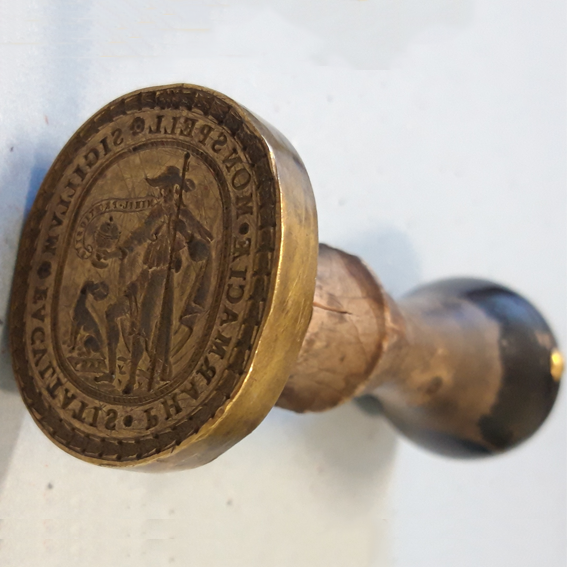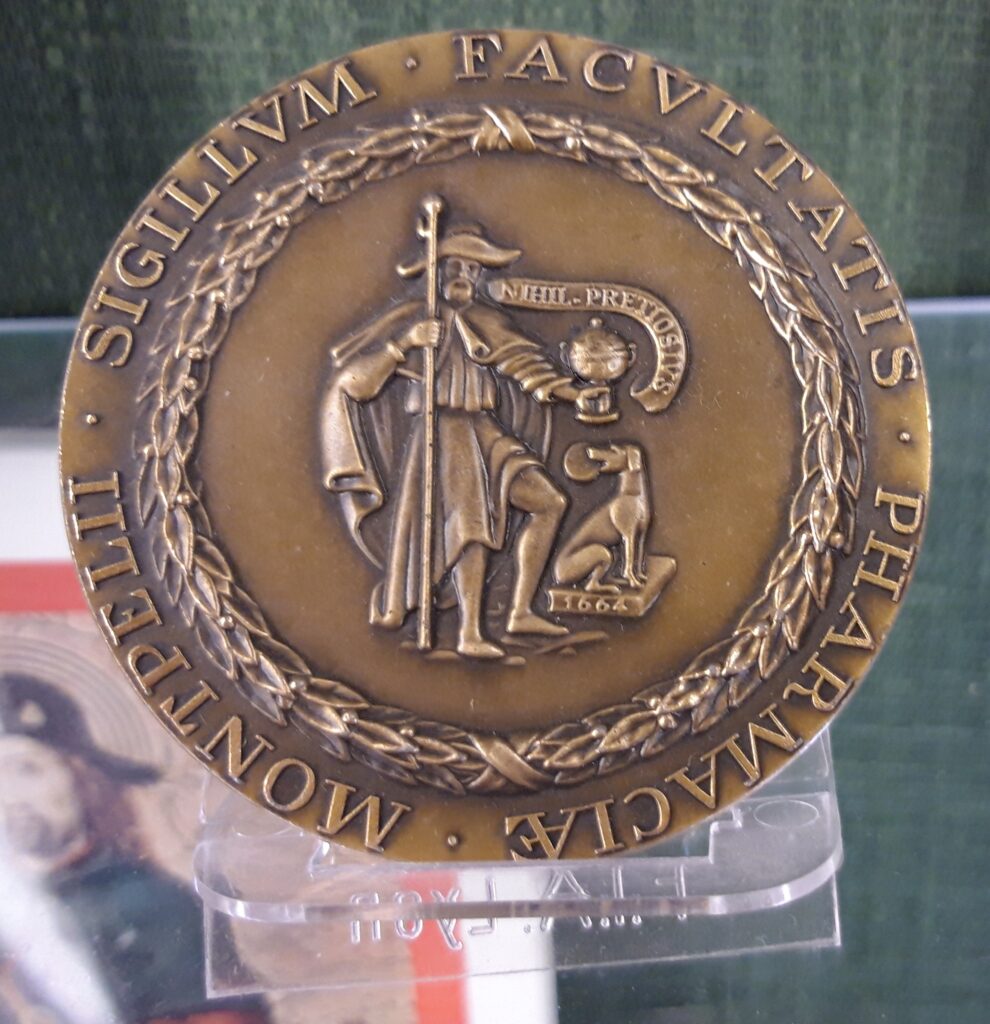Our logo and its history
The logo of our UFR Pharmaceutical and Biological Sciences, also known as the Faculty of Pharmacy, may seem surprising, with this character accompanied by his dog. And yet, it comes from the long history of pharmacy in Montpellier.
As early as the 13th century, apothecary grocers in Montpellier took the "Serment des Especiadors" (Oath of the Especiadors), which contained a promise " to practice the profession well and loyally, and to have all preparations made in the same way, without any sophistication, as prescribed in the Antidotaire where the formulas are recorded ". The statutes of 1340, followed by those of 1572, organized the profession, always under the control of the University of Medicine. The result was the first pharmacopoeia in France in 1574, written at the request of apothecaries by Laurent Joubert, professor of medicine, and the creation of a druggist's shop in 1588, run by an apothecary who demonstrated it three times a year to medical students (the forerunner oftoday's faculty druggist's shop). At the end of his master's degree, the master apothecary always took an oath " to exercise his office well and faithfully, and to observe all the contents of our statutes and regulations ". The statutes of 1631, without fundamentally changing the organization of the profession, bear the mark of the Counter-Reformation, and it is here that the figure of Saint Roch makes his appearance as patron saint of Montpellier's apothecaries.
Why St Roch?
This character was born in Montpellier around the middle of the 14th century. Having distributed all his wealth to the poor, he took up the pilgrim's staff and set off for Rome. Hence the costume: large cape, wide-brimmed hat, staff and gourd. With plague epidemics raging in Italy, he took an active part in the fight against the disease, which he eventually contracted. Quarantined in a wood, he managed to cure himself and survived thanks to a small dog who brought him food every day. Hence, in his representations, the dog (roquet) and the unveiling of his bubo at the top of his thigh. He died around 1379 (in Montpellier? or, more likely, in Voghera?), and his cult as patron saint invoked against the plague is attested as early as 1391 in Italy. Montpellier's attachment to this world-famous compatriot is understandable, as is the apothecaries' choice of this healing saint.
The apothecaries' seal
From 1664 onwards, it was he who sealed the jars of theriac and other mithridates, prepared publicly and taken to the Beaucaire Fair. Hence the vase held by Saint Roch, who said " Nihil preciosus ", "nothing more precious" than this true panacea. Apothecaries then had their own seal, a copy of which is now used to make the wax seal on the oath taken by new doctors of pharmacy. In fact, since the 1960s, the faculty has taken up the tradition of the oath that marks the awarding of the pharmacist's diploma, and has chosen to revive the figure of Saint Roch.



The symbol of our Faculty
In the 1960s, the faculty adopted the ancient seal of the apothecaries as its logo, marking the roots of pharmacy in Montpellier. And now it's modernizing it to look to the future in the continuity of its history.



Text by Marie-Sophie Guibert, Curator of the Albert Ciurana Pharmacy Museum.